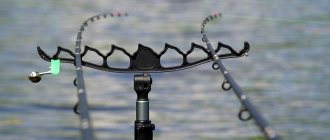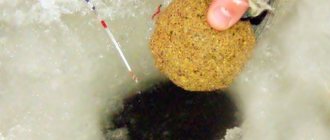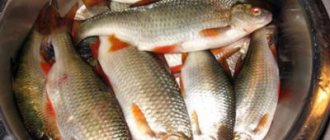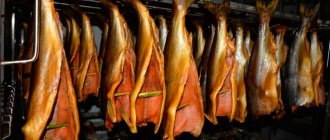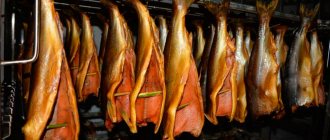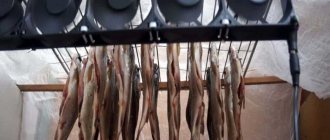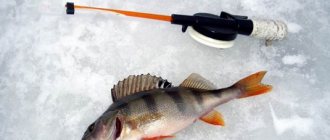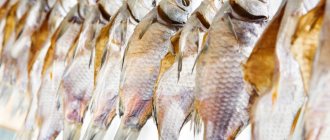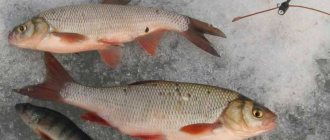Yuri 12/17/2020 761
“Hook!” - fortunately, this phrase when fishing sounds much more often than the word “Pour it up!” What does this command mean? Proper hooking of fish is the key to successful fishing, and its absence or incorrect execution indicates that the fisherman does not understand the specifics of fish behavior and does not know the basics of successful fishing.
How to hook fish on the feeder correctly - biting and landing
One of the burning questions is how to properly hook fish on the feeder. Beginner feeders often have difficulty getting bites. Transferring experience from conventional fishing with donks does not work here - the feeder is a different tackle with a specific fishing technique. In this article we will analyze in detail the nuances of biting, hooking and fishing on feeder tackle.
Equipment Features
When fishing is successful, there are no difficulties. The quivertip twitches, moves to the side - and the fisherman takes the fish out of the reservoir. However, in feeder fishing there are many special moments, failure to comply with which leads to unrealized bites, broken leads or the disappearance of fish at the beginning of fishing. The technique for biting and retrieving is based on the features of the feeder equipment and depends on the nuances of installation, fishing conditions and fish behavior. It is impossible to take all these factors into account in theory. The system develops for each fisherman individually in the process of gaining experience. Here we will look at obvious points that will help novice feeders and, perhaps, add something to the knowledge of experienced fishermen. Read more about feeder equipment.
Bite on the feeder - when to hook
Under different conditions, the bite is expressed in a certain behavior of the quivertype. The standard is a few short pokes and a pull with an amplitude of 5-15 cm. This is a classic bite, followed by hooking and fishing. However, in practice it is not so simple. The behavior of the fish and the variety of conditions introduce an element of unpredictability into the technique of working with fishing tackle.
Factors influencing the display of a bite with the tip of the feeder:
- Feeder equipment (monoline or cord, type of installation, leash length, hook and nozzle size);
- Fishing conditions – distance to the point, current strength, depth;
- Fish behavior.
Depending on the combination of these factors, the bite on the feeder and further sale by the fisherman occurs in different ways.
- A slight trembling, a shotgun without continuation indicates a small fish biting.
- Measured pokes of the tip of the feeder and subsequent pulling are a classic, a normal bite.
- Stretching without poking.
- Crazy dances of the quivertype, indicating self-notching.
Due to the design features of the feeder, the heaviness of the feeder and the long fishing range, self-notching is a common thing for a feeder. During fishing, the angler actively regulates this moment. When the bites start, you need to choose the length of the leash. For idle bites and early escapes, we shorten the leash, and for deep swallowing, lengthen it. In general, we change the equipment so that it starts working effectively, in accordance with the fishing pace. You may need to install larger hooks or, on the contrary, smaller ones. Learn more about feeder fishing techniques.
Idle bites
The first signal to change something is normal bites (obviously not a small thing), but the absence of effective hooks. Possible treatments:
- Changing the length of the leash, stretching the feeder;
- Changing the installation to a different one in principle;
- Changing the hook size;
- Experiments with bait - methods, quantity, method of baiting;
- Hooking options - sometimes you need to wait, in other cases - react to the first poke;
- Changing the position of the rod. It was against the flow - we install it the other way around, at an angle or more vertically.
Working with these moments is an obligatory part of the feeder technique for the implementation of hooking. There are bites, which means the fish have gathered. All that remains is to correctly build a system for working with the feeder and start successfully cutting.
Sweeping
A special feature of the feeder fishing technique is specific hooking. Or rather, absence in most cases (when using the cord as the main fishing line). The usual hooking (jerk) on the donkey is performed only on monofilament. Thin leashes are often used on the feeder. Given the general rigidity, due to the inextensible cord, a sharp jerk can break the leash even on a 200-gram roach. In addition, especially when fishing in the current and at long distances, the bending of the quiver tip indicates that the fish is self-hatching. When fished, the heavy feeder of the feeder itself drives the fish’s hook into the soft tissues of the mouth. Therefore, the standard feeder hook is a smooth and flexible lifting of the rod, turning into playing.
In the standard version, you need to hook while pulling the quiver tip after several pokes, and also if the tip is bent strongly enough - more than 5 cm. However, in practice, especially when the fish is passive, experimentation is required in this matter. Sometimes you need to wait, at other times you need to hook at the slightest movement. Summer crucian carp or tench can fray a lot of nerves by trying the bait for 10-15 minutes. But the standard is hooking when pulling the quivertip. Not twitching, not poking - just smooth bending.
Hooking on a feeder with a monofilament line is required, especially at long distances - due to the stretchability of the line. When feeder fishing for a predator, especially pike perch, you also need to hook it hard in order to break through the strong mouth of the fish. But these are special cases. A standard feeder hook on braid is an elastic lifting of the tackle without giving up any slack, which turns into fishing.
Fishing
Fishing with a feeder also occurs smoothly and softly. Sudden jerks and, conversely, slackness should not be allowed. This approach is determined by the heavy feeder in the equipment, the overall rigidity of the installation due to the braid and thin leashes. You should be especially careful when pulling the fish through a steep edge. The larger the fish, the thinner the leash and the heavier the feeder, the softer and more careful you need to fish. Even a small fish can break the leash, however, you can actually bring out a trophy specimen if you do everything correctly. When using thin leashes, even on small fish you need to use a landing net.
Strong fish, carp, carp, large bream or crucian carp, can easily tear off the leash when jerking the lever from the feeder, especially a heavy one. For such fishing, a shock-absorbing piece of feeder rubber is installed in front of the leash - a feeder. You need to be especially careful at close range. To get the fish from under a steep edge, we use gentle pumping. To do this, the rod rises upward with a springy movement, then lowers down while winding the fishing line. This must again be done gently, measuredly, avoiding jerking or sagging of the feeder working equipment.
For normal fishing, you need to constantly work with the clutch. During casting, the brake is tightened (so as not to cut your finger), then it is adjusted again. And so on every cast. This is not an inconvenience, but part of the mandatory fishing technique. In the feeder, especially when switching to it from a regular spinning rod, you need to wean yourself from hooking sharply and in a big way. This approach is fraught with loss of fish and cliffs.
Struggle. Fishing
The hook was a success. There was a fish stuck at the opposite end of the tackle. If the fish is small, then there is no fight as such. The fisherman easily brings his prey to the shore or boat. But if you come across something significant, you need skill and experience.
For many beginners, getting the fish to bite is only half the battle. Problems often lie in wait during the fishing process. One mistake and the catch is lost.
The first thing you should pay attention to is psychology. When an inexperienced fisherman realizes that something serious has taken a bite, his adrenaline goes through the roof and “blows the tower away.” This is what gives rise to many errors. Even one is enough to lead to failure. We need to calm down. Give yourself some kind of attitude. “Control yourself,” “hush, hush,” something like that. Take control of the situation.
After successful hooking you need:
- do not loosen the tension of the fishing line even for a moment;
- maintain the angle between the rod and line;
- make sure that the reel brake is not tightly clamped;
- be especially careful in the final stage.
If you loosen the line, the prey may jerk, make a candle, and the hook will simply fall out of the wound stretched by the hook.
If you lower the rod too low, it will stop working as a shock absorber. The entire load will fall on the fishing line, and this is fraught with breakage of the gear.
If you press the brake too hard, a strong jerk can be fatal. And neither the stretchability of the fishing line nor the flexibility of the rod will save you. You need to get used to adjusting the brake of your reel and actively change the force holding the spool in the process of fighting large fish.
It is especially important to ease the brake a little during the final stage. The fish can behave relatively calmly in the depths. When she feels approaching the shore, or sees the silhouette of a boat, she will probably make a decisive feint. Such a breakthrough was worth many trophies. We need to wait for this and be ready to repel the last final pushes.
How to hook fish correctly
8 minutes Author: Andrey Goryachev 168
Hooking is a very important action, on which the final result of fishing often depends. By learning how to hook fish correctly, an angler can significantly increase the weight of his catch.
When fishing with a float rod
It can be quite difficult for a novice fisherman to master the hooking technique and wait for the right moment to hook when fishing with a float rod. This is due to excessive emotions when biting and a great desire to pull the bitten fish ashore.
Choosing the right moment to hook is also complicated by the fact that each type of fish has its own bite pattern - this requires an individual approach to hooking.
Technique
If an angler has learned to cope with his emotions, then mastering the hooking technique when fishing with float tackle is quite simple. When fishing with a fly rod, the hook is a short and sharp jerk, the amplitude of which is about 15–20 cm. This movement will be quite enough for the sharp hook to pierce the soft tissues of the fish’s oral cavity and securely hold it while fishing.
A short hook is also good because it allows you to avoid re-casting the rig. If the fish is not caught, then after free hooking the equipment can not be re-cast, but left at the fishing point. This technique allows you to increase the pace of fishing. It is important to remember that this action is effective only when fishing on animals and hard plant baits. If a “chatterbox” or dough is used as bait, they will fly off the hook at the first sharp movement of the rod.
Beginner fishermen often make the mistake of making too vigorous and sweeping movements with the rod when biting, which can lead to the following unpleasant consequences:
- breakage of the leash;
- fish lip rupture;
- tangling of equipment;
- rod breakage.
Such troubles more often occur if the fisherman has chosen a fast-action sports rod for fishing, which has an excessively stiff whip. In this regard, it should be noted that an inexperienced angler should give preference to softer fishing rods, which allow some mistakes to be made when hooking.
Hooking is carried out in a completely different way when fishing with Bolognese and match gear. The fact is that when fishing at a long distance, the wind or current puts constant pressure on the fishing line. As a result of such pressure, the monofilament goes to the float not directly, but in an arc. The resulting arc often interferes with making a quality hook. In addition, a long piece of monofilament fishing line has a high elongation coefficient, which also complicates the cutting process. In order to reliably hook a fish when fishing at a long distance, the angler needs to make a sweeping movement with the rod, which will allow him to select the formed arc and neutralize the shock-absorbing qualities of the fishing line.
Choosing the right moment
In addition to the hooking technique, the fisherman must learn to understand at what point he needs to hook. In this matter, much depends on the following factors:
- type of fish;
- type of nozzle;
- fish activity.
- correct loading of the float.
It can be very difficult for an inexperienced fisherman to decide on the hook when fishing for a fish such as crucian carp. When fishing for crucian carp, the float can “squat” for a long time and move slightly from side to side. If you hook at this moment, then most likely the fish will not be detected. When fishing for crucian carp, the fisherman should be patient and wait until the float quickly moves to the side and begins to sink.
The tench bite deserves special attention. This fish can stare at the bait for several minutes. At this time, the bite alarm “squats” barely noticeably. You should only hook when the float antenna disappears under the water.
Bream also likes to taste the bait for a long time. If he likes the bait, he pulls it into his mouth, creating a directed flow of water, while the angler sees this action as the rise of a float. The hook should be carried out at this very moment.
Roaches usually feed above the bottom, so their bites look more aggressive. As a rule, the roach immediately drowns the bite alarm, which requires immediate hooking.
The bites on the perch float are also very expressive. Usually the float suddenly goes under water. You need to hook the predator immediately so that it does not have time to swallow the bait deeply.
The choice of when to hook depends largely on the type of nozzle used. If a worm is used as bait, then you should not rush into hooking. It is necessary to give the fish some time so that it can completely swallow the large bait. The fish usually swallows smaller baits right away, so you need to hook them a little earlier.
To perform a timely hook, the angler must also focus on the activity of the fish. If the fish is inactive, then during the entire fishing trip you may not see a normal bite, however, every time you pull out the equipment, you discover that the bait has been eaten. In this case, you need to hook at the first vibrations of the float.
The success of hooking greatly depends on the correct loading of the float. The bite alarm should be immersed in such a way that only a small part of its antenna remains on the surface of the water. If not only the antenna remains on the surface, but also part of the main body of the float, then the fish will feel the resistance of the equipment and will be able to pull the bait off the hook with impunity.
Particular attention should be paid to the sharpness of the hook. Many anglers make the mistake of trying to fish with one hook throughout the season. Modern hooks are very sharp, but they dull quite quickly, especially if fishing takes place in a reservoir with rocky soil. A dull hook makes reliable hooking impossible, so this piece of equipment must be replaced with a new one after 4-5 active fishing trips.
Nuances when fishing with feeder tackle
Feeder gear also requires the angler to understand the correct moment to hook. Feeder bites can vary greatly depending on several factors;
- the size of the pecking fish;
- the type of reservoir where fishing takes place;
- construction of equipment.
If we are talking about catching small fish, the bites of which often look like a small trembling of the quiver tip, then you should hook at the first movement of the tip of the feeder. When an angler aims to catch a large fish, he should not pay attention to the frequent jerks of small fish. Hooking should only be done when the quiver tip bends sharply.
The nature of the bite largely depends on the type of reservoir where fishing is carried out. During the current, the fish takes the bait more aggressively than in still water. This fact must be taken into account in order to carry out timely cutting.
The structure of the rig also affects the nature of the bite. Some types of feeder rigs are mounted in such a way that the angler does not need to hook at all. For example, equipment called “method” ensures reliable self-hooking of pecked fish.
When hooking on a feeder tackle, it is necessary to take into account the type of monofilament used. If the rig uses a braided cord, then the movement of the rod should be short and have an amplitude of 20–30 cm. This is due to the fact that the “braided line” has an elongation coefficient close to zero, so a hook that is too wide can result in the leader breaking. If monofilament fishing line is used as the main monofilament, then the risk of the leader breaking is significantly reduced and the hooking can be more sweeping.
On the donk
A bite indicator in bottom gear is usually a bell, which can indicate a bite not only visually, but also notify the fisherman with its ringing. The first stage of a donk bite looks like a slight trembling of a bell. At this moment, the underwater inhabitants are just tasting the bait, so the fisherman needs to refrain from hooking. It is necessary to hook at the next stage, when the line begins to tighten sharply or, conversely, weakens.
For spinning
The nature of the hook when fishing with a spinning rod depends on the type of bait chosen and the type of fish that is intended to be caught. When fishing with spinners, wobblers and “inedible” rubber, you need to make a detecting movement with a spinning rod at the first suspicion of a bite, since, sensing a catch, the predator instantly spits out the bait. If the angler uses “edible” rubber as bait, which includes aromatic oils and flavoring additives, then you can take your time with hooking and give the predator the opportunity to swallow the bait deeper.
Pike and pike perch have a hard, bony mouth that can only be penetrated with a strong, sweeping hook. Chub and asp are distinguished by their fleshy lips, so when fishing for these predators, too vigorous hooking is not required.
For winter gear
In ice fishing, hooking plays just as important a role as in open water fishing. When fishing with jigs and floats, the fish should be hooked very carefully, which is due to the use of thin fishing lines in winter. The hook should be a short and sharp movement of the hand. If the angler makes a more sweeping movement with his hand, then if a large fish bites, breaking the line will become inevitable.
When fishing for perch in shallow water, the hook should also be short, which will protect the tackle from breaking. When fishing for pike perch at great depths, you need to hook more widely, this is due to the stretchability of the monofilament line and the very hard mouth of the predator.
Hooking pike during winter fishing with girders deserves special attention. Only by learning how to hook a pike correctly can you count on the effectiveness of the jig tackle. Having noticed a bite and approaching the bait, the fisherman should immediately pay attention to the condition of the bait reel. If the line quickly leaves the reel, then the hook should be done immediately.
If the monofilament comes off the reel slowly, you need to wait a little while the pike swallows the bait more deeply and speeds up its pace. If the line does not unwind at all, then you should not hook at all. To begin with, you need to slowly pick up the slack and, only after feeling the resistance of the predator, strike. Hooking a pike onto a jig tackle is a sharp movement of the forearm.
Proper hooking is one of the most important components of successful fishing. If an angler knows how to hook a fish correctly and in a timely manner, he will be able to avoid the unfortunate loss of the trophy.
Where are roaches found and what do they eat?
This fish is never in one place, changing its location depending on the time of year.
In early spring, before spawning, which begins at the end of April, roach are most active. At this time, it prefers to stay near steep banks, in places where melt water flows, carrying in its waters oxygen, plant remains and larvae of insects wintering in the ground. As the water warms up to 10 degrees, mating season begins. Roaches spawn most often in flooded areas, small creeks, and small channels, where it is almost impossible to catch them.
In the spring. In the first weeks after spawning, the fish have an increased appetite, and they bite well on any bait.
In summer. The roach then switches to its usual summer routine, in which it can only be caught in the early morning and at sunset. Now her favorite places are the shores overgrown with algae, water lilies and reeds. This continues until late autumn, and with the onset of the first cold weather, the roach go to the depths in flocks, but continue to feed.
In autumn. During this period, it can only be caught using bottom tackle in open areas remote from the shore. In winter, roach is also caught from the ice in deep-sea areas with slow currents and rich vegetation.
The roach is a non-predatory fish, but in addition to plant foods, its diet contains:
- various worms;
- insects and their larvae;
- shellfish;
- crustaceans.
Depending on the time of year, the diet of fish may vary. This should be taken into account when choosing bait.
In early spring, late autumn and winter, it is preferable to use worms, maggots, bloodworms and caddis larvae. In summer, the best bait will be dough, bread, insects, and boiled cereals. In hot weather, roach will not disdain even algae wound on a hook. Don’t know how to plant maggots or bloodworms? Read our instructions.
Proper hooking and landing of fish
It would seem that hooking a fish is the first thing a person faces when learning the basics of fishing, so this is the skill that should be developed best. In reality, it turns out differently; many, having started hooking and fishing incorrectly, only continue to polish their mistakes, and as a result, this is reflected in the number of fishing trophies. The ability to correctly hook a fish that has bitten is the key to productive fishing, and the lack of the skill of correct hooking indicates that the fisherman does not understand the behavior of the fish and does not know the basics of fishing.
In this article we will look at the main mistakes when hooking and landing fish. These recommendations apply to almost all gear.
Errors when biting
If the angler does not hook immediately after the bite, but begins some manipulations such as winding the line with a reel, this is a serious mistake. A bite should always be followed by a hook. Fishing with any tackle includes an element of hooking - the tip of the hook must penetrate - accordingly, hooking is necessary.
The second mistake is cutting too hard. There are several nuances here - firstly, all fish are different, and not everyone’s lip can withstand a strong hook. For example, the soft lips of a perch tear easily. And the hook can simply be pulled out of the fish’s mouth without getting caught. And if there are trees behind the fisherman on the shore of the reservoir, with a strong but idle hook, there is a high probability of leaving the equipment in the branches. You need to strike moderately hard, taking into account the size of the hook, the size and strength of the lips of the intended fish.
The third mistake is cutting too early or, conversely, cutting too late. Here you need to know the habits of the fish - not every fish grabs the bait confidently. The ideal option is when the fish has the bait in its mouth, and it swims away with it - at this time, either the float confidently sinks to the bottom, or it completely floats to the surface, or the float quickly moves to the side. When fishing with a feeder - a sharp bend or full straightening of the rod tip. Hooking at the first twitching of the float, when oscillating from side to side, is often ineffective - you simply pull the bait out from under the nose of the fish, which is wondering whether it likes your worm, or to look for another one. Late hooking is also often unsuccessful, which is determined by the fisherman’s thoughts “It’s better to wait until it swallows for sure” - if the fish feels something suspicious - the tension of the fishing line, the hook - it will spit out the bait, and there will simply be nothing to hook... The same thing with weak biting, when the fish takes it sluggishly and inactively - often, having savored the bait, it simply moves away.
Several factors are important to perform the perfect hook. Firstly, this is the structure of the fishing rod, or more precisely, the flexibility of the tip. If you are catching small fish, or fish with soft lips, for example, roach, perch, you need to use a rod with a soft tip and hook it gently. If your goal is pike perch, asp, pike or bersh, we do exactly the opposite - a sharp hook is even recommended. With a soft hook, you simply will not break through the hard lips of the pike perch - this is precisely the reason for its numerous disappearances near the shore. The asp’s lips, although soft, are very dense, so a sharp hook will not tear them.
So, we have decided on the hooking technique, and we have spotted the fish - but this is only half the battle - the fish on the rod and the fish in the cage are two different things - the most important thing remains - to get it out correctly - because it is especially offensive to lose a trophy that was already on your rod .
The basic rules for proper fishing are simple: firstly, never loosen the line - it must be constantly tensioned while fishing. As soon as you give up the slack - if the fish is not hooked well - it will free itself from the hook. Or, if it is a carp or a barbel, there are often cases when, resisting, the fish winds a loose line around itself, and when it gets between the teeth of the dorsal fin, it is cut. These troubles are easy to avoid - always keep the line under tension while fishing.
An important factor is also the skillful use of the clutch. Especially if the line breaking threshold values are close to the weight of the fish being caught. By persistently and non-stop pulling the fish towards the shore, you can tear the fishing line, the fish’s lips, or even a low-quality hook can become bent. All this is prevented by the friction, which absorbs strong jerks of the caught fish. Friction is a device that releases line on spinning reels under strong tension. The clutch activation threshold is adjusted mechanically by tightening or loosening it. The friction allows you to optimally combine the bend of the rod, the tension of the fishing line, and the shock absorption of fish jerks. Always adjust it based on the line tension from the rod tip, rather than trying to pull line off a stopped reel with your hand at the tip.
When landing fish, take into account the topography of the fishing area. Do not let the fish go into the grass and writhe, where it instinctively strives for shelter. This is clearly expressed in tench - after hooking, it rushes like a storm into the very thick of aquatic vegetation. Try to build a fishing route in such a way as to take her out of her comfort zone. It would be optimal to lift the fish to the surface of the water and let it take a breath of air - for example, bream then resists much less actively.
Have a landing net with you, even if there are no large fish in your plans - they can always hatch unexpectedly. When fishing a large fish to the shore at the top of the water, carefully place it over the landing net placed in the water and quickly remove it - the fish has practically no chance of slipping out of this trap. If it happens that a large fish bites, but there is no landing net nearby, carefully bring it to the edge of the water and grab it by the gills. Do not try to pull the fish ashore with a fishing line, especially if it is thin or the shore is not flat. Remember that on the shore the same weight will be greater than in the water - there is a risk of breaking the fishing line.
Lure
Or you can prepare it yourself from cereals and many other ingredients:
- pearl barley;
- millet;
- cake;
- dill;
- bran;
- breadcrumbs;
- and other components.
When fishing in the current, mix the bait mixture with clay and sculpt balls from it. Such balls are guaranteed to reach the bottom in the place you need.
Try making balls from commercial Trapper or Sensas bait. You will notice how much more effective they are than regular homemade baits.
It is also very useful for the bite to add those attachments or baits that you are going to use for bait. This increases the fish's confidence in your bait.
Try not to overfeed the fish and do not throw all the bait into the water at once. Usually, the full effect of bait begins only 15-25 minutes after feeding during the current. But in a body of water with stagnant water, the effect may be delayed. Use aromatic additives for fishing in still water.
We recommend buying bait from the following manufacturers at an affordable price:
- Sensas
- Traper
- Vde
- Pelican
- Dunaev
They have been tested by many anglers.
We hook and fish fish out of the water correctly
Another component of absolutely any fishing is the ability to hook correctly. But many novice fishermen sometimes ignore the need to do this, due to their inexperience, or because of a feeling of excitement, and therefore, immediately after the bite they begin to simply reel in the reel.
The content of the article:
Basic rules for successful hooking
The ideal moment for hooking is when the float not only goes under the water for a while, but also floats away in any direction. But it’s better not to overexpose it. Since, sensing something wrong, for example, a protruding hook, or strong resistance of the float, the fish can easily “spit out” the bait and swim away. Or he can simply remove the bait from the hook.
The method of performing a correct hook depends on certain conditions. So, for example:
Don't worry if you do something wrong at first. All comes with experience. In order to achieve ideal results in this matter, it is necessary to use a suitable rod, namely its tip:
Proper landing of fish on shore
After the hook is made and the fish is on the hook, you need to pull it out of the water, and make sure that it does not come off. The following tips will help you not to be left without a catch:
- Don't let the fish loosen the line . Because if there is no tension and if the fish does not “sit” firmly on the hook, it can easily break free. Therefore, try to maintain the tension, right up to the shore.
- Do not let the fish go into various shelters , otherwise it will simply swim behind the nearest snags, reeds, or other aquatic vegetation and you will easily tangle your gear. After which you will be left without them, and the fish itself.
- When catching large fish, in order to avoid breaking the rod or breaking the fishing line, use such a convenient device of any spinning reel as a friction clutch . The friction allows you to unwind the fishing line towards the fish, due to the strong tension it creates. The force with which the spool begins to move can be set by turning the regulator on the reel itself, and checked by simply pulling the line with force.
- Also, if you catch a large prey, do not ignore the possibility of using a hook or a landing net . If you don’t have a landing net, you can make it yourself, you can read about it in this article.
Fishing process
Silence is the key to effective fishing. Try not to make noise when throwing gear unnecessarily. Don’t forget, bream is extremely cautious and shy. Avoid slapping the rod on the surface of the river, this will scare away the fish and ruin all your fishing.
The bait is placed in the same place where fishing will be carried out in the future. After casting it, you should give time to the fish to gather around the turbidity that the food will create. Don't rush to hook. It is necessary to wait until the float clearly falls on its side or moves to the side, and then sharply hook the bream.
Fishing on the current in the river
Depressions and weak currents are the main factors that guide bream when choosing a habitat. Pits or reaches located in rivers between lakes can most often be rich in this fish. As a rule, bream leaves its shelter and swims to the shore closer to the morning to find food.
For coastal fishing, pits with a depth of 3-5 meters are suitable. In the early morning, a large specimen can be caught at a much shallower depth. If the current is strong, then the fishing becomes more dynamic, and the bream reacts to bait from a greater distance, becoming more careless. Recommended tackle is a plug rod.
A few tips for successful bream fishing:
- Be careful with flavorings. Use a mild powdered flavoring, if possible try to avoid it as fish are wary of strong odors.
- The nozzle should lie on the bottom without moving
- Complementary foods should be dense and break up into large fractions. A small fraction attracts small fish, which can reduce fishing efficiency
- Fish the bream away from the feeding point; do not frighten the gathered fish.
- The amount of bait directly depends on the strength of the current. With a strong current there should be more.
How to feed properly
Bait must be taken seriously. A wise choice will ensure a good bite. The food should be dense and viscous. To do this you need to add a little clay to the composition.
It is important that the color of the seal matches the color of the bottom
If the bait does not have sufficient viscosity, it will disintegrate before reaching the bottom and attract unwanted small things. Having molded the first ball, it is worth checking it by throwing it near the shore. If it disintegrates only after sinking to the bottom, the consistency is correct and it can be used.
If this is onboard fishing, then it is worth using a net, which allows you to make a more accurate cast and reduces the erosion of the food by the current. The mesh feeder can be filled with porridge. Keep in mind that the bait must be on the bait path, otherwise the effectiveness of the bite drops significantly.
Read How to catch perch using a spinning rod and what gear to use
Proper hooking and landing of fish
“Hook!” - how often have you heard this expression while fishing? Proper hooking of fish is the key to successful fishing, and lack of hooking is a sign of a lack of understanding of fish behavior and the basics of fishing.
The following tips and warnings apply to almost any type of fishing equipment.
Mistakes made by fishermen when biting
- There is no hooking after the bite , but immediately there is a leisurely rewinding of the reel or other manipulations. This is mistake. After the bite, hooking should be done in any case. The use of any fishing tackle that includes a hooking element - the hook provides for hooking after a bite.
- The hook is too strong. The lip of not every fish will withstand a strong hook (you can easily tear the soft lips of, for example, a perch), and sometimes during a strong hook the hook will simply fly out of the fish’s mouth without catching. You need to hook in moderation and based on the strength of the fish’s lips, the size of the hook - the weaker these indicators are, the weaker the hook is needed.
- Cutting too early or too late. Not every fish takes the bait confidently. The ideal time for hooking is when the fish has taken the bait in its mouth and is trying to swim away with it, at this time there is a confident bite on the float or the tip of the rod.
Perfect hook
The hard mouth of a pike perch is very difficult to cut through
Firstly, for a perfect hookup you will need the appropriate rod (namely its tip). If the fish you are hunting is small in size or its lips are not strong enough, then it is better to use soft tips of your fishing rod.
Perch, roach and a number of other fish have very soft lips , so you need to hook them gently.
But for zander, bersh, pike, and asp, strong hooking is not scary, but on the contrary, it is recommended. If the rod whip is not hard enough, you will not be able to make a decent hook on the pike perch (its mouth is very hard and because of this, the pike perch often leaves either at the end of fishing or on the shore due to a weak hook at the beginning). And the asp and some other fish have very dense lips, although soft, so hooking is also not scary for them.
Secondly, do not make the mistakes discussed in the first subheading. You need to cut on time and with sufficient load.
Choosing a float fly rod and its equipment - an article about how to avoid making simple mistakes when choosing a light float rod.
Fishing with a float rod from A to Z - read the guide for the novice angler on how to catch fish 100% using a float.
Read 7 simple tips on how to get any fish to bite in this informative review.
Basics of proper fishing
Front clutch on a spinning reel (there is also a rear clutch, but it is a little less sensitive)
Here are a few basic rules that must be followed to prevent the fish from getting off the hook while fishing or breaking the line:
- The line must be tensioned 100% of the time of fishing. You just have to give it some slack and if the fish is not hooked well enough, it will easily free itself from the hook. This will not happen if the line is constantly stretched.
- Use a clutch. You shouldn’t go too far with the tension of your fishing line; in the end, the fishing line may break and the fish’s lip may tear and the hooks will bend (if they are of poor quality) - the friction clutch comes to the aid of the angler when biting a large fish.
- A drag is a device on spinning reels that releases the line in favor of the fish under strong tension. This will allow you to constantly keep the rod slightly bent, the line taut, and at the same time, with strong jerks of the fish, the clutch will be activated, which will not allow the tackle to break. Before fishing, make sure that the clutch releases the line precisely with a fairly strong (but non-critical) tension of the line from the tip of the rod, and not with your hand directly in front of the reel.
- Do not let the fish go into snags and other shelters. From the very beginning, try to take the fish out of its comfort zone. It’s best to go to the surface of the water, then it will be much less likely to take your equipment into the shelter, from where you won’t be able to get the fish and you’ll have to tear the line.
- Use a landing net. When bringing the fish to the shore along the surface, bring it into the exposed landing net. And if there is no landing net, carefully bring it to you and grab it by the gill covers, or by the gills, if this is more convenient in the case of catfish.
If you don’t have a feeling for the correct hook, then very soon it will definitely appear. Like any other skill, this skill comes with practice.
Catching roach with a fishing rod in the current
If you select a section of a reservoir with a current, then it is best to use a 7-meter long fly rod and fish with a retrieve. This type of tackle gives the angler full contact, thanks to which he can make holds and small twitches with the rod. With a fly rod you can make timely hooks even with not very obvious and expressive bites. In such cases, it is better to use a float with a blind type of fastening.
If the promising point is located at a decent distance from the shore, then a Bolognese fishing rod is used. The line comes down from the spool and a long retrieve is made. It should be slow or medium speed. If you throw the equipment into an area with a fast current, the roach will not bite.
If no bite is observed even in an area with a slight current, then it is necessary to pause or combine with baits. A good option is a sandwich with maggots and caddis. Sometimes sprays help improve the bite. In the spring, attractants with the scents of coriander, pepper and vanilla can be used to catch roach.
You can also change the leash to a longer one, and place a foam ball on the hook to the main nozzle. Such a bait will take a long time to fall, and the roach will have more time to take the falling bait. It is well known how roaches love to guard such bonuses that slowly fall from above. Be sure to try this technique and you will increase the number of fish in your tank.
If there are no bites, you can make small pull-ups with pauses at regular intervals. The result is a zigzag pattern, which often leads to fish biting. Another good way to get fish to bite is to hold the fish every meter. This will slow down the movement of the nozzle along the bottom. You can hold at very short intervals and then the nozzle will rise and fall.
Float tackle for long casting
When fishing at a long distance with a match rod, a rig with a sliding float is mounted. When you catch roach close to the shore, it is much easier to correctly set the diving depth so that the tackle is as sensitive as possible.
For this purpose, float stops are used, lowered or raised along the fishing line to the desired point. Only the float antenna should be visible in the water, then even the most careful fish bites will be clearly visible. At long distances it is difficult to accurately position the float and therefore a tackle with a sliding float and an olive-type weight is used.
To tie such a tackle you will need:
- leash with hook;
- olive weight;
- float stops;
- sliding float with ring;
- rubber mounting bead;
- swivel number 8-10.
The installation is knitted directly on the pond, on the main fishing line:
- thread the float stopper onto the main line and pull it to the desired height;
- put a float on the fishing line;
- stretch another stopper onto the fishing line;
- place a weight on the olive;
- string a bead;
- tie a swivel to the end of the fishing line;
- Attach a leash with a hook to the swivel.
The mounting bead is needed so that the olive weight does not “break” the knot that attaches the swivel to the leash. At the beginning of fishing, the approximate depth at the fishing point is set. If the float floats up to half the “body”, then the hook lies on the bottom; if it lies on the water, the hook and sinkers lie on the bottom, in this case the upper stopper should be lowered.
The lower stopper should be at a distance of 10–15 cm from the swivel so that the weight slides along the line, limited by the stopper and the bead. There is no need to make the distance between the swivel and the stopper too large, otherwise it will be inconvenient to throw the tackle.
Having reeled in the fishing line and left an overhang of 40–50 cm, the fisherman casts the equipment to the fishing point. In this case, the weight and float slide down to the swivel, without interfering with an accurate cast. The depth at the fishing point can be large, and the upper stopper will have to be raised high along the line. In this case, the stopper should slide freely into the rings of the match rod, that is, they should be quite large.
If you take a very small float stopper, it can slip into the float ring when casting and the tackle will not take the working position. In this case, use pliers to tighten the ring on the float so that the stopper does not slip through. For long-distance fishing, floats with a carrying capacity of 7–10 grams with high antennas and a weighted keel are used. They are clearly visible in any weather, and they are much easier to cast.
The installation is done in such a way that the hook and nozzle lie on the bottom, unless, of course, the weight of the olive matches the weight of the float. If you take a smaller weight and lower the upper stopper to the required distance, the hook will float in the water column. In this way, the depth of immersion is regulated, and roach is caught both in the water column and from the surface.
